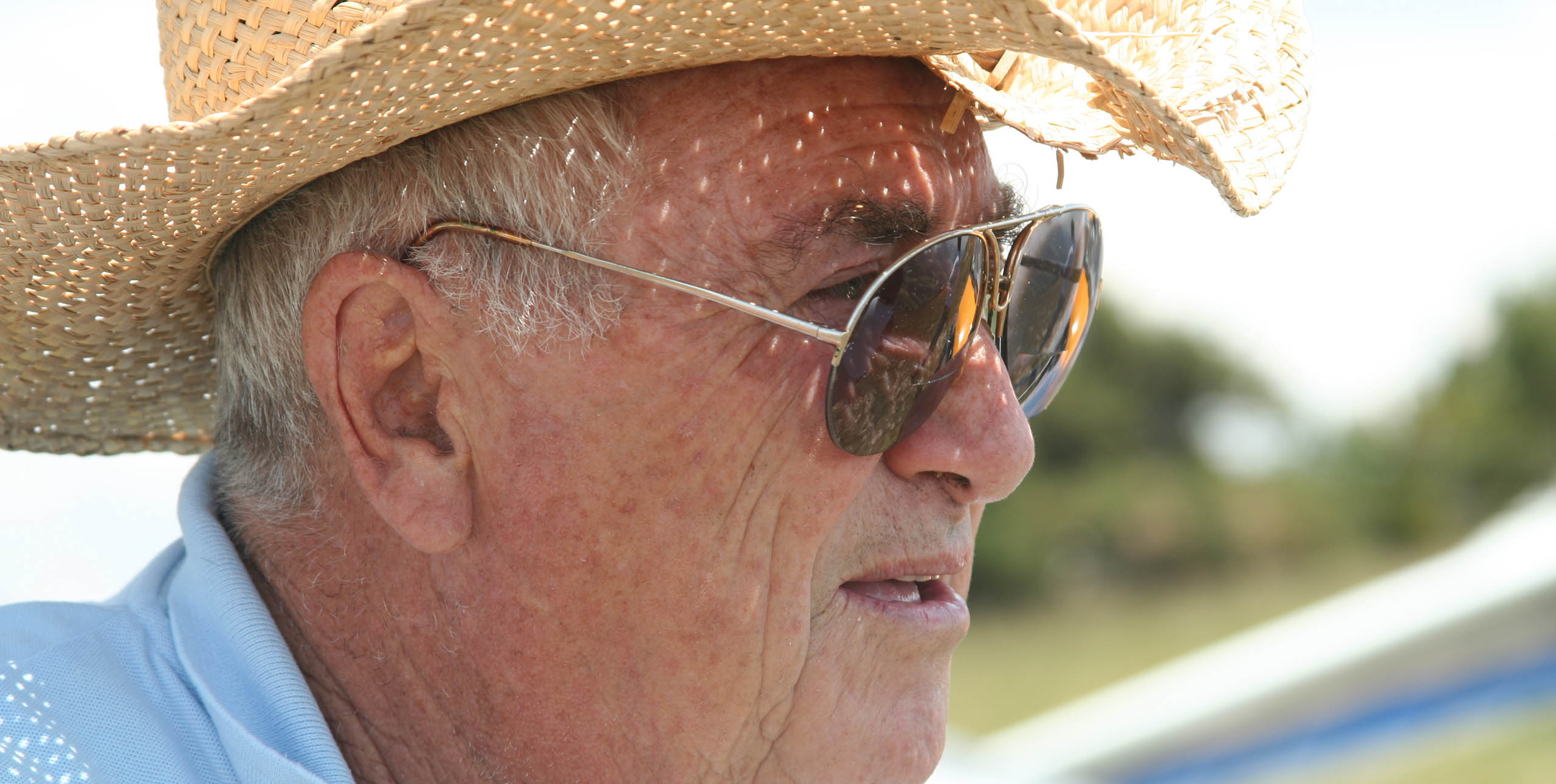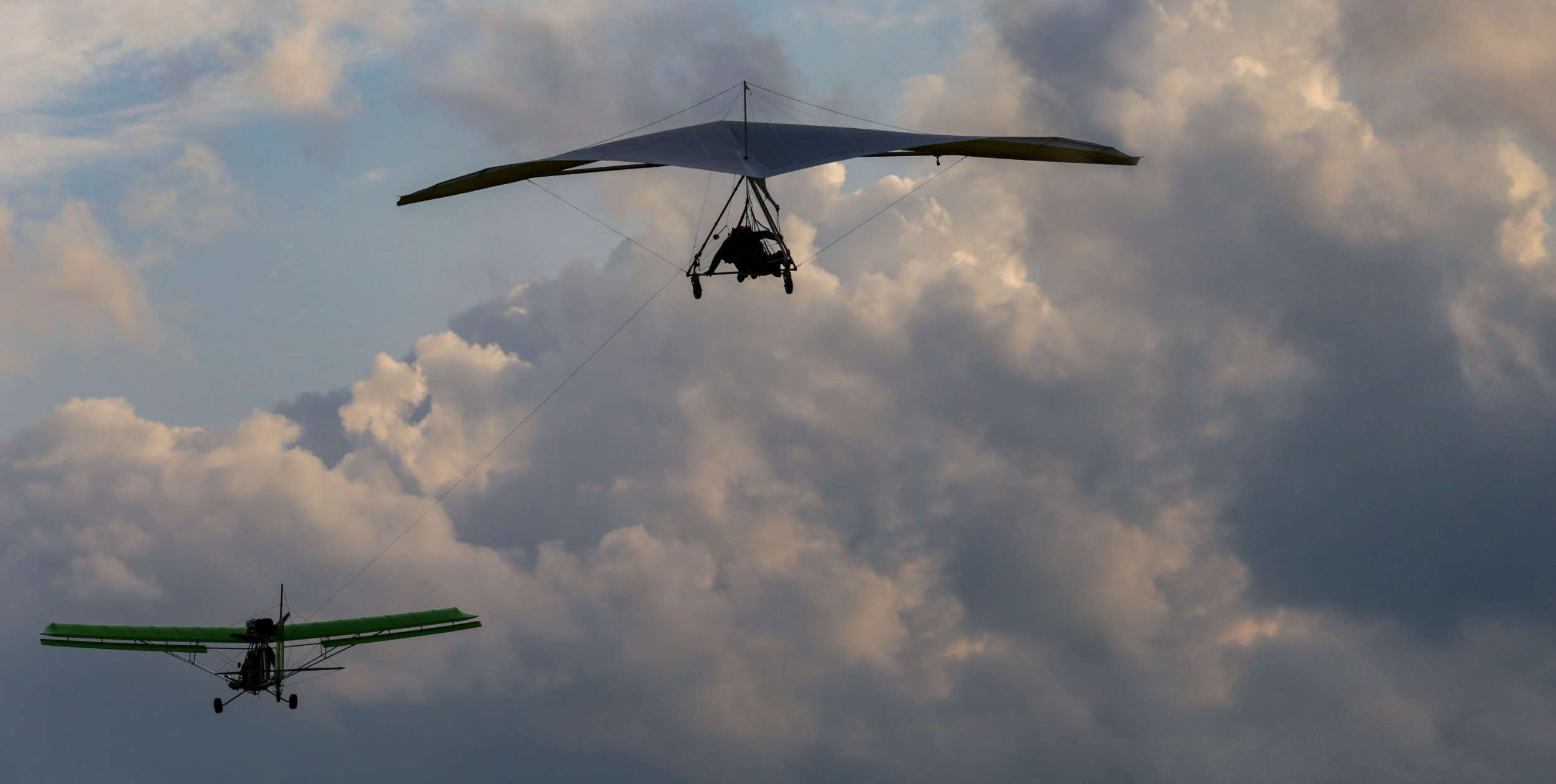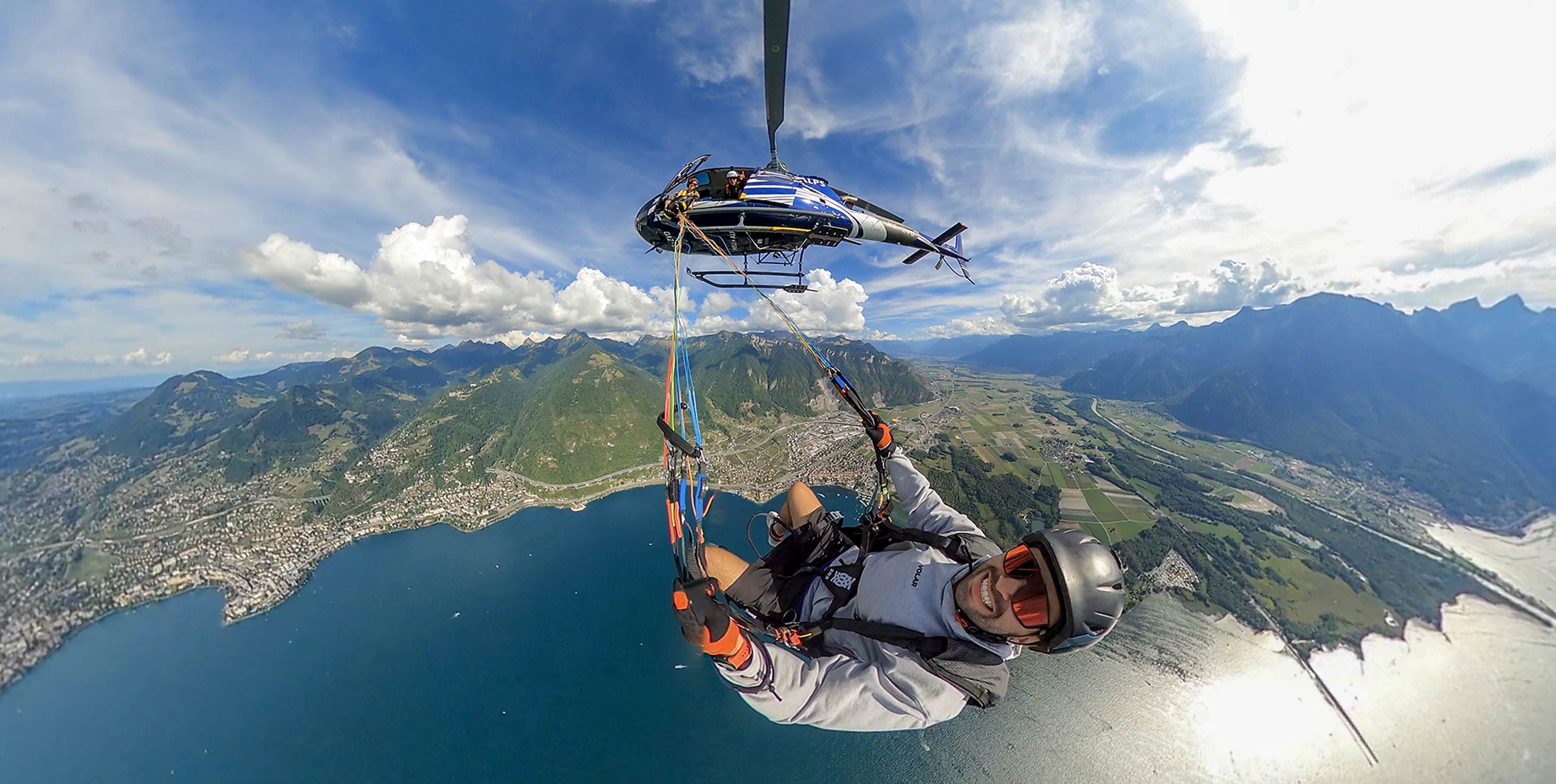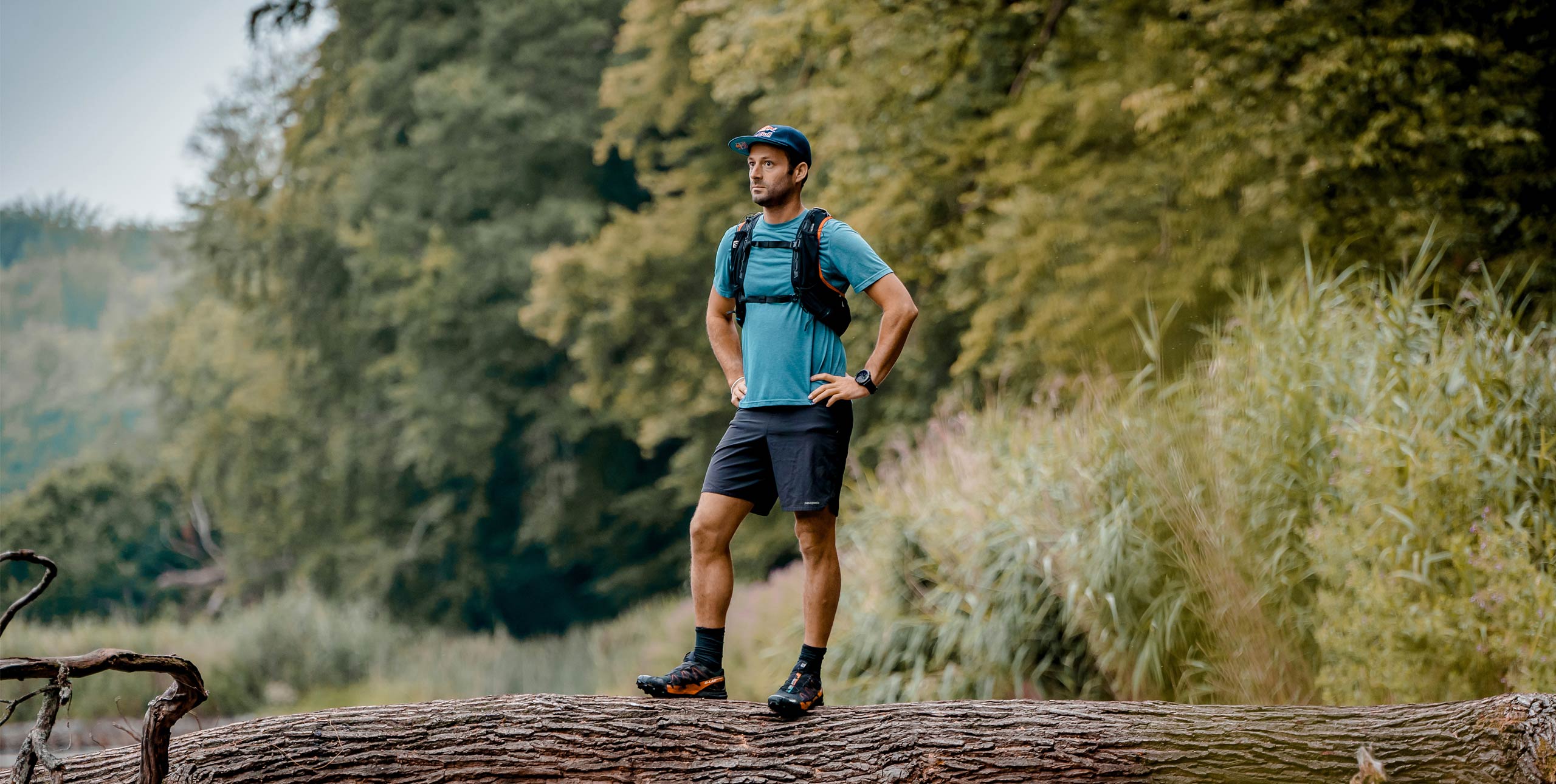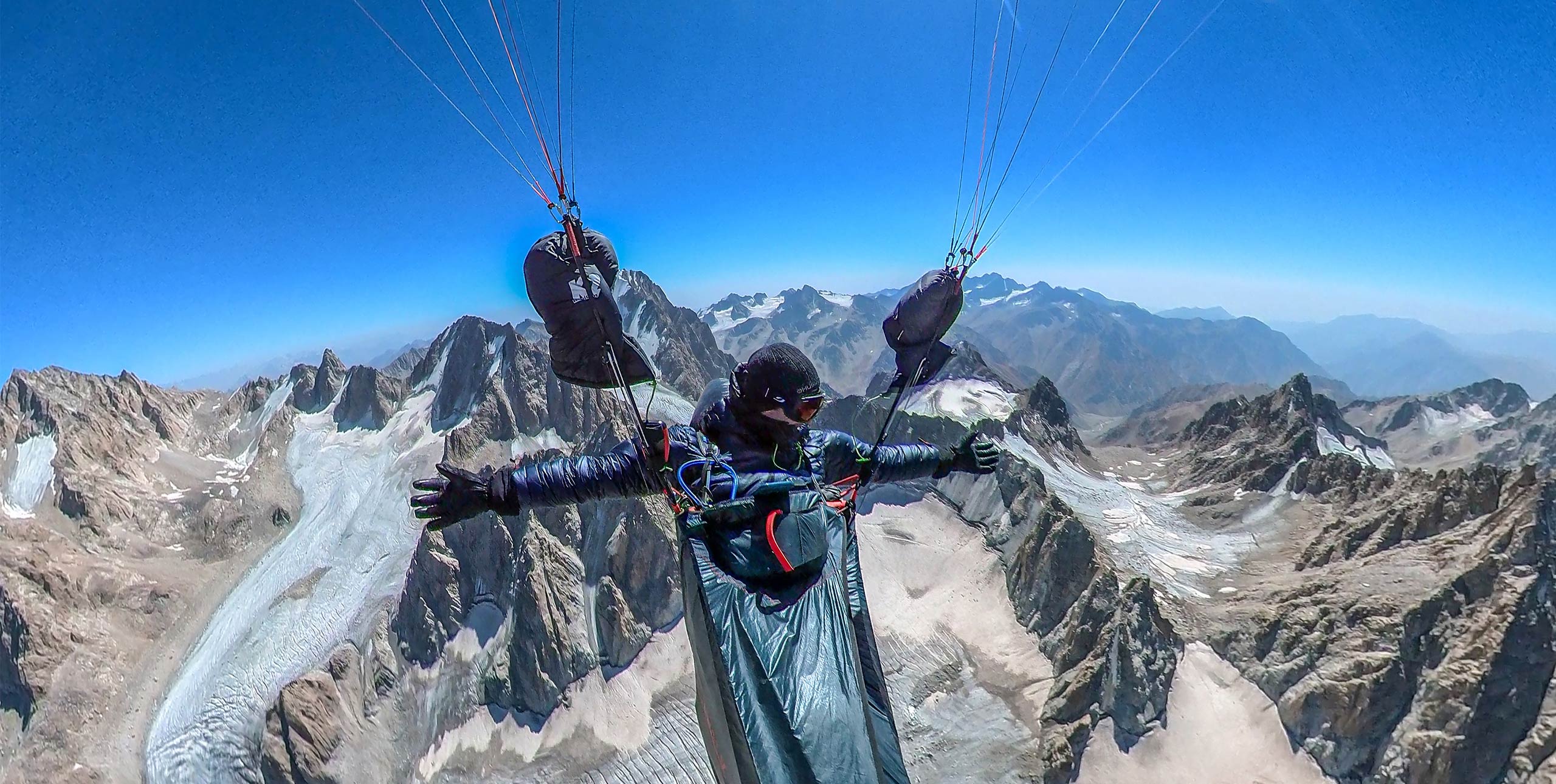Manfred Ruhmer’s finely tuned mylar Laminar ST has carried him to victory after victory. Fly and Glide magazine’s Thomas Rauch got an opportunity to fly the supership this March in Bassano. Here’s what he discovered…
From what has been said about Manfred Ruhmer and his glider, a couple of important statements come through:
1. Manfred must be a potential suicide if he sets his swivel tips that low.
2. Because of this, his glider is extremely dangerous and only Manfred has the necessary knowledge and experience to fly it.
3. During the world championships, this glider clearly out-glided the rigid wings.
Seen I’ve known Manfred since 1989 (at the time we worked together at the Vega manufacturer) and he is still alive, I may at least disregard the suicide theory. Also the other two statements sounded somewhat like plain rumors. So we met on the southern side of the Alps in order to discover the truth. I had a serial version of the Laminar ST with me, so I could directly test and compare the differences in case I would survive
On that distinctively calm Bassano autumnal day, I had enough time to speak with Manfred about his glider. To think that he used a standard glider to fly the worlds is just an illusion. Just as it is for any top pilot, who works for a manufacturer, Manfred’s glider is a prototype with modifications that before being included in the series production will be thoroughly tested.
Design and Finishing
In essence the cut of the upper- and lower-sail is identical to the standard version. However, Manfred has given a special value to optimizing the aerodynamics of the lower sail. This is achieved by using three flat battens per side the standard has only two.
Another difference: on the outer side of the wing he has two extra cloth ribs inside the sail, altogether five per side. Manfred had to work hard, development-wise, in order to optimize the whole under-surface; he used streamers to study the airflow on the wing.
The proven combination straight battens/cloth ribs should be included in the serial version. The upper sail is made of a special heavy Mylar cloth (200 g/m2) that will be used in some versions of the 2000 season.
On the outer wing, Manfred uses a 52mm diameter tube and an internal reinforcement. Apart from this, the tubing geometry, their construction and the dive sticks system is the same as the 99 standard model. Also the wing tips are, like the standard, compared to the tubes axle, somewhat higher positioned: “Otherwise the undersurface would not be tidy, in addition the glider would not stay neutral when circling”
Variable Geometry
The VG has in both directions an enlarged range: The glider can be set looser as well as tighter than the standard version. With the VG full off you even have more twist on the sail, which I think, enhances the safety. When you peek in the inner sail, two small differences stand out. In the first place, the hang strap/see-saw connection is one or two centimeters higher than normal. Manfred explains that the hang strap length did not fit correctly and that it is easier to put an aluminum divider than to make a new hang strap.
In the second place, on the rear side of the central block there is a thin steel cable fastened, which runs to the end of the carbon cross bar. The same system was used on the first Topless from La Mouette. These additional cables are loose with the VG-off, and tight with the VG-on. They also limit, with the extra VG-on, the mobility of the central block. The stiffer, admittedly noticeable, handling with the VG-on is the cause though for a definite higher in-flight smoothness, here the typical central block movement will be decisively reduced.
I ask Manfred about the second VG cable that he, supposedly, installed. He clarifies that he is able with a simple movement to change the setting of the outer tips during flight. He tested this system during training but took it off before the competition began; he received his new sail and found the proper setting for the tips just in time. Besides, the earlier glide comparisons made with Oleg Bondarchuk and some other competitors, which were definitely to his advantage, allowed him to consciously give up the possibility to adjust the outer tips.
Pitch Management & Hardware Optimization
When you observe the rigged glider from the back, you will notice the comparatively low dive sticks system. They are surely lower than the standard ones, accepts Manfred. However, he flies, unlike his Icaro Team colleagues, with an S-curve on his fourth batten, instead of only battens one to three. This gives you a nicer bar pressure during speed flying and lowers the lift value in the middle section of the wing. As a result the glider stays better in the thermals.
Important, to have enough safety reserve in flight, is the exact height setting of the two outer tips, when compared to each other. Besides, with a flatter profile (less momentum) and an optimized under surface he has additional safety supply, which he may then bring into play when lowering the tips setup.
It sounded enlightening, but it still did not reassure me completely.
At long last I critically examined the carbon speedbar with the front-rear cables set half-way up the downtubes a bit too critically maybe: “They are resistant, there is an aluminum tube inside. Besides, I made them myself.”
Manfred explains their construction: “There is an aluminum tube all along the downtube, reinforced at the top, surrounded by balsa wood and then covered with a carbon web.” I estimate a width of 15-20mm. “It had to be made, as usual, very fast before the worlds”, he added.
Since we both fly an M2 harness, the hang strap fitted. Quickly I get the Bräuniger IQ-Competition and the GPS mounted on the carbon airfoiled speedbar, and there I go towards the take-off.
Take-Off
The higher front-rear cables feel unusual when hooking-in. In this way you can, already hooked-in, go over the downtube and look backwards and upwards. Also when you lift the glider “missing” the cables is unusual, a streamer is almost impossible to put up there.
When you pick up the glider for the first time, there is a pleasant side effect: Since at upper arm height a part of the cables run to the back it is easier to level the slightly tail-heavy glider. In addition, the cables lie on the upper arm. Theoretically, you can let your hand go from the downtubes and carry the glider just with your shoulders/upper arms.
I started several times with nil wind. The glider gets off your shoulders in the best manner after two or three steps and it allows you to make corrections without problem. The take-off speed felt quite low. This would confirm itself later with the low stall speed.
Thermal Flying
With the VG loose in light thermals the glider lies perfectly neutral in the curve, without tending to slip. The handling is absolutely easygoing; the glider can be practically flown with two fingers. No wonder: with this tip setup the sail practically cannot lay on them and impair the handling.
The bar path from the normal thermalling position all the way until reaching stall speed, is large enough, so that flying in brusque conditions with the VG-on is still possible. I could not detect any turn at all that needed correction.
The stall is clearly noticeable. If you push the bar a little bit too far out, the Laminar responds to it with a light, hardly perceivable dip and minor height loss altogether it also has a very good-natured flight behavior with loose VG and with some VG-on.
Conspicuous was also the low sink rate of the glider. I could also by ridge soaring do tight 8-curves with very low height loss. Also later on, with some thermal activity added to the ridge soaring the glider did not show any unusual reactions. I particularly liked that you could even turn in the smallest bubbles, and the wing would turn nearly on the same spot.
VG Positions
With the VG-off I was able to fly at a minimum speed of 28 km/h. Under this speed there was a dip and a quick recovery. The trim speed was around 32 km/h. By constant acceleration the bar pressure will increase in a linear way. The possible highest speed with VG-off lies definitely over 100 km/h. The bar pressure is then reasonably strong.
When you pull the VG fully on, the stall speed should be around 29 km/h. I cannot tell for sure for I did not try it. Before the first take-off I asked Manfred how would the glider behave with full VG-on. The World Champion shrugged his shoulders: “Wouldnt know, I havent tried it yet .”
With VG-on the trim speed lies around 32 km/h as well. In acceleration the bar pressure is positive and continuously increasing, when you reach about 60 km/h it stays constant and at the highest speed I dared to reach, almost 110 km/h, it was low.
This is, however, not even close to reaching the end of the flagpole. In the memory of Manfreds Bräuniger IQ-Competition I could see the numbers of some flights of the SpeedGliding competition in Malaysia: It had saved speeds over 140 km/h. If you take out the above mentioned S-curve of the fourth batten, the bar pressure according to Manfred will decrease continuously.
Really conspicuous: The sail of the Laminar stays, in the entire speed range perfectly. Even with loose VG and 100 km/h there is not the slightest sign on the wings undersurface of a “misbehavior”. Even the so-called characteristic loosening of the trailing edge between the outer battens (cloth bulges when it has less tension) does not occur. On the sail the Pause Company, close to Murnau (Germany), really did a good job.
Manfred’s Laminar showed throughout the whole speed range and regardless of the VG position absolutely no yawing tendency. However, the handling deteriorates, with the additional VG-on, drastically. The roll response with the full tight VG is quite slow.
Glide Performance
Due to the already described good-natured flight behavior, I asked myself if this was really the original World Championships’ setting. Luckily there still was a rigid wing pilot there, that was soaring with us over the East paraglider take-off.
Climbing I was able to stay with him straight of but was not better either. We were hanging around 50 or 100 mts. above the paraglider cloud, where we could be in peace. He flew twice in front of me about 500 mts. towards the flatlands he had my same height.
Of course I did not miss the opportunity to measure the glide performance difference. To be honest, I must admit that the Atos pilot had wheels on his speedbar and did not have an optimum harness with a Y-shaped hang-strap. On the other hand, on this day I was not wearing speedarms and buzzed with flattering sleeves over the landscape
In any case, with full VG-on and around 80 km/h glide speed I had no trouble in catching up and placing myself next to my fellow pilot, within no time. Until this moment I would have never even been close to achieving such a thing!
In a previous morning flight I had read, at 80 km/h, a constant sink value of approximately 2.5 meters per second. Whether this absolute value could be now taken literally, it remains to be seen. Anyway, the best glider I have ever flown had a sink rate of approximately three meters per second.
Stall Characteristics
When stalling the glider in flight, I was cautious. With somewhat loose VG the glider gives you no problems it shouldnt either, since stalls happen quite often in thermals. With even looser VG the imminent stall is perceptible just like in the series glider, at this point, Manfred’s glider dips lightly but the nose definitely stays above the horizon. The recovery curve is small.
Since with half VG-on the glider already dipped in a stronger manner and subsequently flew a considerable recovery curve, I decided not to do this test with full VG-on.
Anyhow, I did try flying the glider, with full VG-on, very close to the above-mentioned position. 29 km/h were still possible to fly. I then pulled in the speedbar strongly down to my stomach so I could, at least, get an idea of the bar pressures behavior: huge recovery curve; at times very low but still always positive bar pressure. All in all: extremely demanding!
When stalling the glider in a curve with loose VG it maintains its bank angle and, to be particular, it minimally dips in the wing. With the VG half on the glider then decisively dips in and it can be steadily spinned. With full VG-on I was properly cautious.
In the curves I only tried to slow down the Laminar and bring it to a stall, to a certain extent. As soon as the glider, without any transition, began to stall and the interior area of the slower wing abruptly turned away and downwards I immediately stopped this situation with an energetic “high-side”.
In this situation it is also relevant: with full VG-on, only for Pros!
Landing
I was pleasantly surprised by its landing behavior. Apart from a quite mighty ground effect you can land this racing machine even easier than some gliders with DHV 1-2 classification. The glider does not show any turning tendency on final glide and it can still be nicely corrected on ground effect.
The flare moment is very easy to recognize, and the flaring range is large. The gliders surface stalls neatly even with a discreet flare and does not drop the wing perfect, standing landings were no problem at all even with nil wind.
Summary
Somehow, Manfreds glider seems to me as a wolf in a sheeps skin. On one hand the in-flight behavior taken from the expectations of a “normal” kingpostless pilot is nearly suitable for beginners and almost too good to be true. On the other hand, with more than half VG-on, which is about full VG-on on a standard Laminar, it turns into a nasty high-performance glider which only belongs in the hands of pros with a lot of experience.
Manfreds perfect tuning is essential for the good impression this glider makes in flight. Without his background of massive experience and aerodynamic knowledge, the wing would definitely not fly as well and, as rather safely, as it does. In any case, my girlfriend claims that long after my first landing with this glider, I still had a confident grin on my face. I swear: That was not based on “plainly having survived”.
Let all the imitators be warned: Simply lowering the dive sticks and thinking you have improved your gliders performance is quite dangerous. This is exactly what enhances this suicide theory: when pilots get out of their harnesses white as a sheet and promptly go change their dippers, although Manfred who has been again standing in goal for some time has his dive sticks even lower
Altogether, this glider shows where the development is headed. Until now it was mostly so that the hot prototypes of previous years would be adapted to a series production. And this wing makes it impressively clear which performance potential still lies in the hang glider design.
However, almost two years ago no one seriously believed that an FAI-Class I glider could achieve the performance level of a rigid wing such as the Exxtacy. Last season this was, at least in the competition scene, exactly the case.
• Got news? Send it to us at news@xccontent.local
Subscribe to the world’s favourite hang gliding and paragliding magazine


